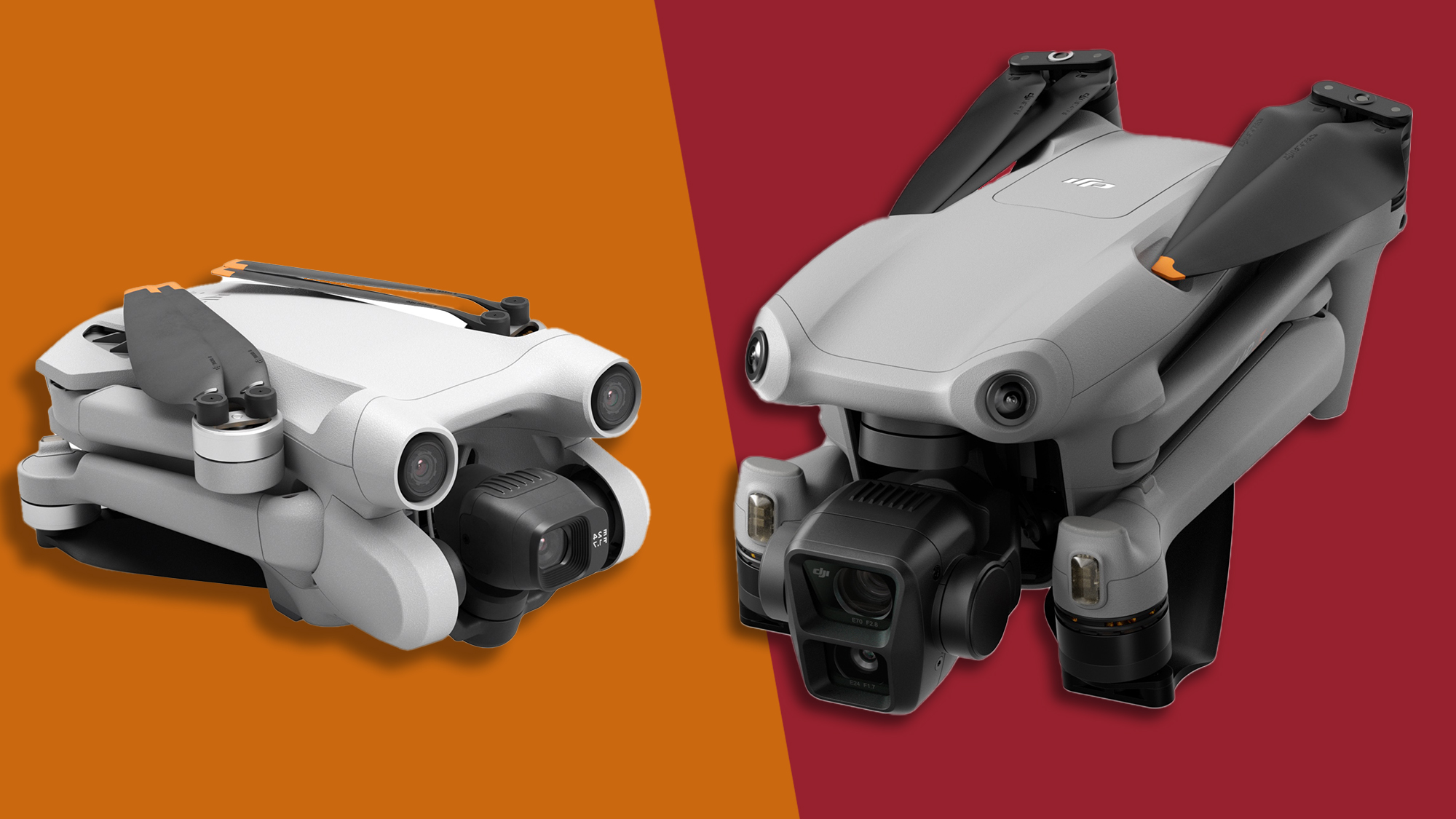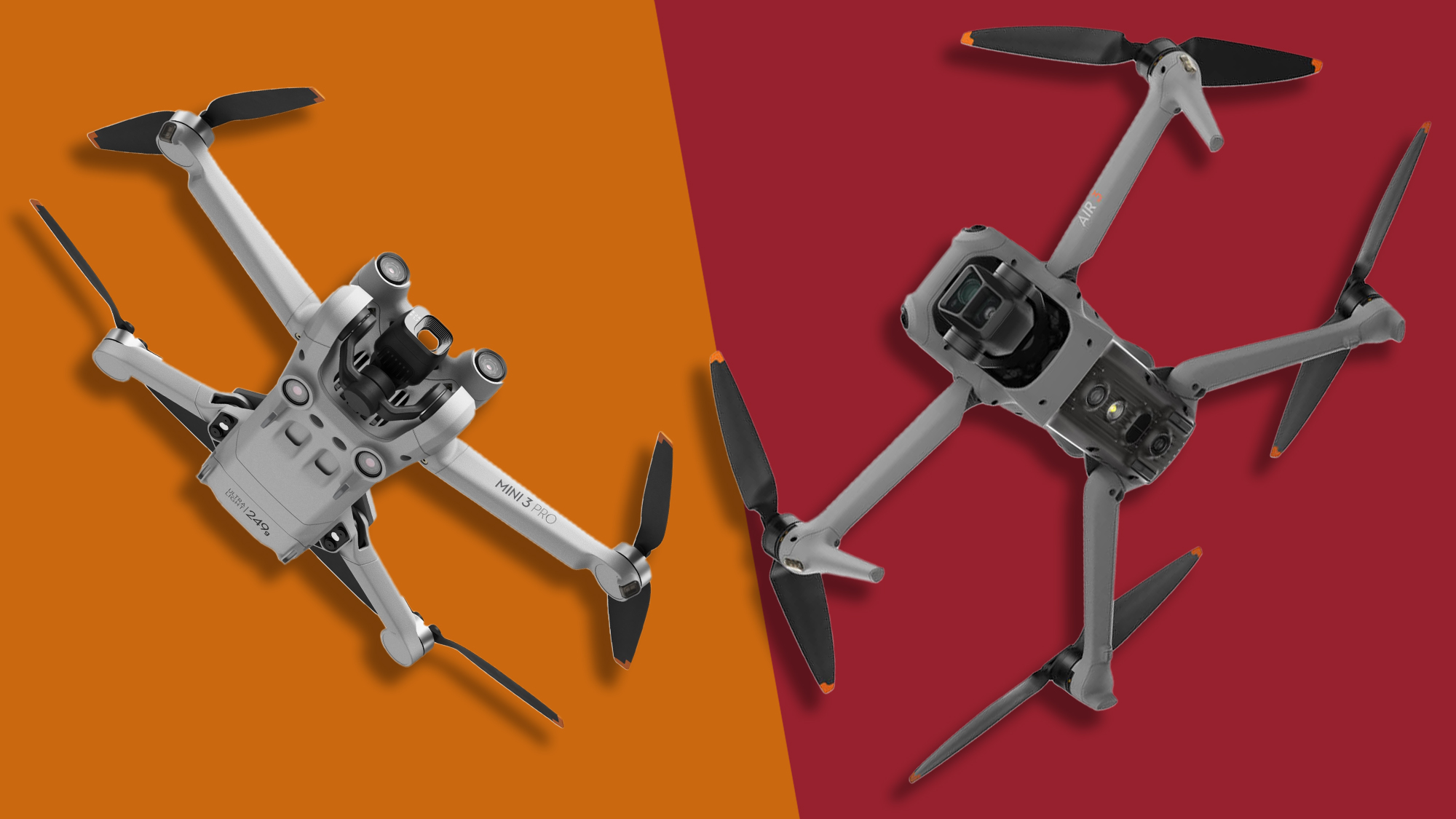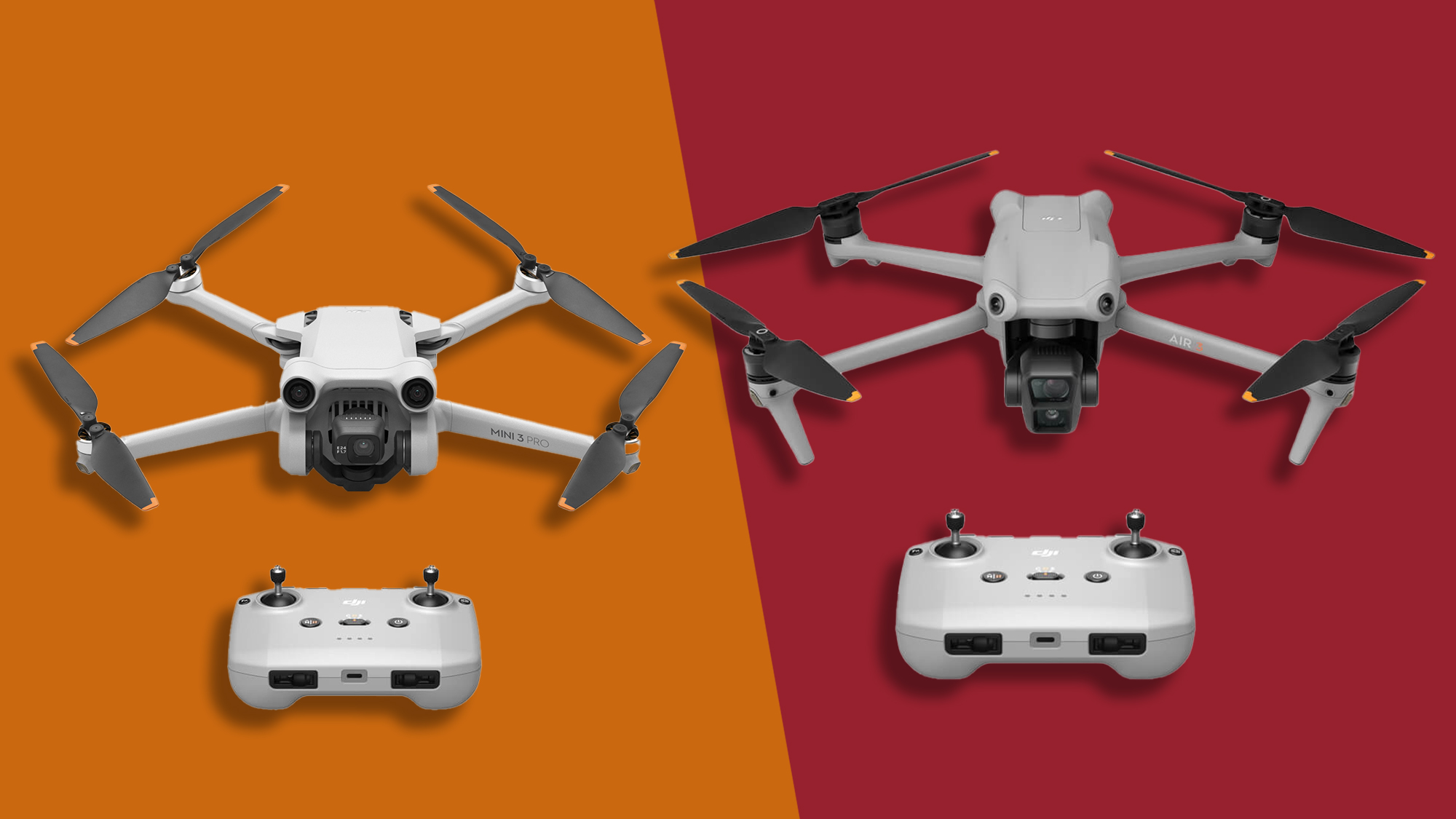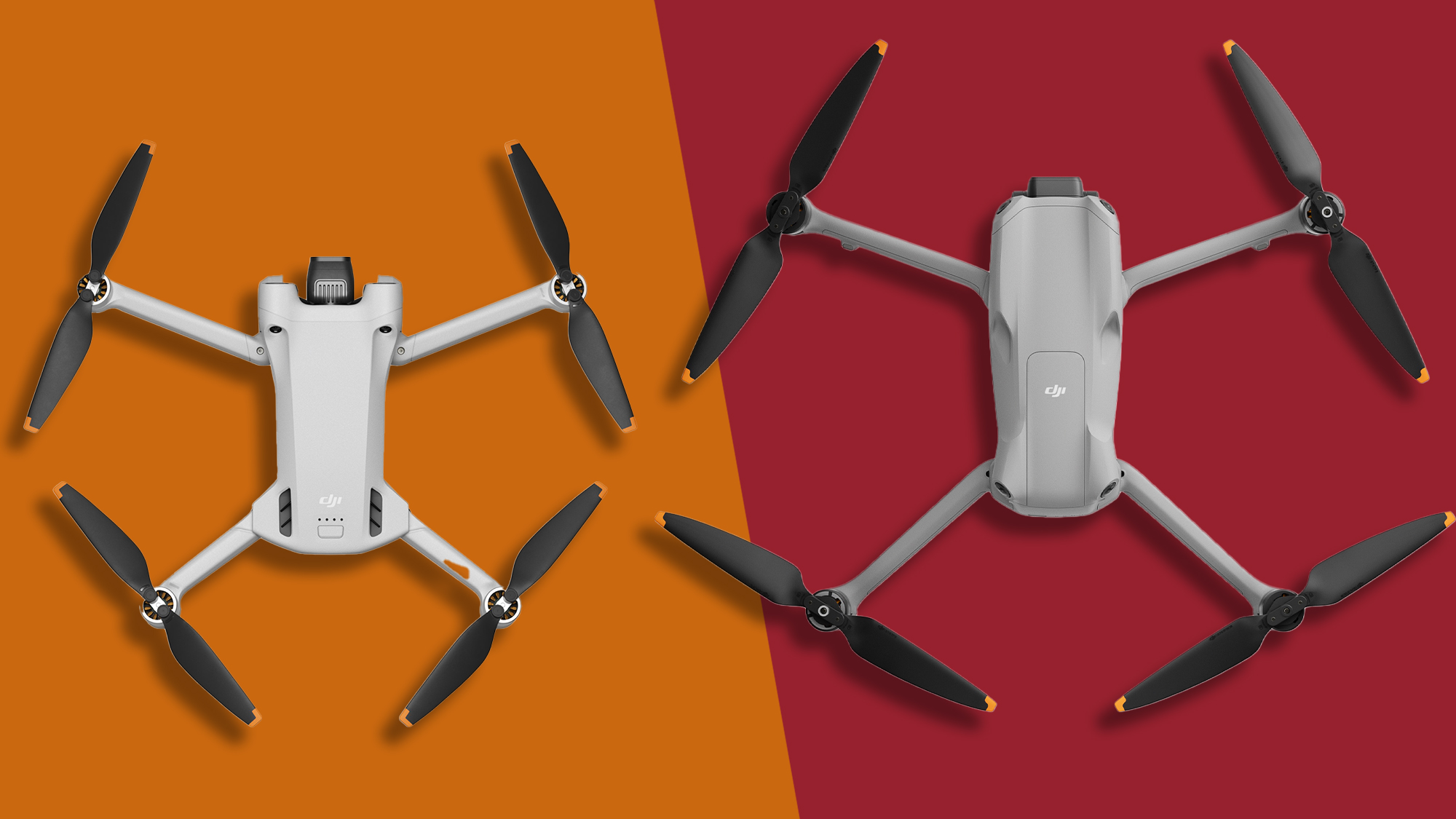
The DJI Mini 3 Pro is a serious upgrade for the Mini series, and the best compact drone you can buy right now. With its larger sensor, built-in obstacle avoidance and intelligent flight modes, it packs the performance of larger drones into a compact and convenient package. However, while the Mini 3 Pro is suitable for novice fliers, its price tag lifts it to more serious and exclusive heights.
For
- Impressive low-light performance
- Useful obstacle avoidance
- Handy automated flight modes
Against
- Pricier than previous Mini models
The Air 3 is a significant upgrade over the Air 2S, and its pricing makes it a good option for anyone flying the Mini 3 Pro but wishing for better wind resistance, as well as a 3x zoom and features such as Waypoint Flight; if you're in Europe just be aware that it falls in the C1 category. The image quality is nothing short of world-leading for a drone, and the new DJI RC 2 remote's external antennas have greatly improved the range.
For
- Dual cameras
- Excellent wind resistance
- Generous 46-minute flight time
Against
- C1 European rating
- Fixed aperture is bad news for ND filter users
- Large protruding camera likely to suffer in case of accidents
DJI released its latest drone, the Air 3, in July 2023. In our 4.5-star DJI Air 3 review we praised the significant upgrade it offers over its predecessor, the Air 2S, which was released in 2021. We also liked its new dual-camera system, excellent wind resistance, generous 46-minute flight time, and improved safety features.
But what if you want a smaller drone? The new Air 3 falls into the C1 European category, meaning less freedom and more restrictions than the sub-250g category – which, conveniently, is where the DJI Mini 3 Pro lands. That’s why we’ve decided to compare these two drones, to help you decide which to buy.
Should you go for the newest drone with the most features and longest flight time? Or would you prefer the freedom of flying the slightly older, but smaller and more affordable model, complete with its ability to fly just about anywhere without registration, and which in our DJI Mini 3 Pro review matched the Air 3 with a 4.5 out of 5 rating.
Here’s a closer look at the features and specifications of each done to help you work out which is best for your requirements.
DJI Mini 3 Pro vs Air 3: dimensions, weight and design

Both of these drones feature DJI’s folding design, where all four arms fold inwards, dramatically reducing its overall size and making the drone far more portable – even pocketable, in the case of the smaller Mini 3 Pro.
The Mini 3 Pro measures 145 x 90 x 62mm when folded, compared to 207 x 100.5 x 91.1mm for the new Air 3. But, while the DJI Air 3 is the larger of the two, the key difference is their weight, and what implications that has for where they can be flown.
Because the Mini 3 Pro weighs a fraction under 250g, it can be flown just about anywhere (albeit away from airports and other sensitive locations flagged by DJI’s flight systems) and without the need for registration. On the other hand, the new Air 3 weighs 720g and therefore carries a C1 rating in Europe and the UK, which covers drones weighing up to 900g.
This means there are some extra restrictions on where it can be flown, such as over crowds; refer to the CAA website and our own UK drone laws explainer for more information on drone laws.
DJI Mini 3 Pro vs Air 3: camera

The camera is where DJI has made some big changes for the new Air 3. Unlike other, single-lens drones from DJI, it features a pair of 1/1.3-inch CMOS sensors housed within the same gimbal; one sits behind a wide-angle, 24mm equivalent lens, while the other uses a 70mm-equivalent medium-telephoto lens offering 3x zoom.
The zoom lens won’t be useful for everyone. But, as we covered in our review of the Air 3, it can be useful when the drone’s C1 restriction prevents it from getting closer to a crowded event, or when you want to record wildlife from a distance where they won't be disturbed.
The Mini 3 Pro records 4K video at up to 60 frames per second, but the Air 3 beats that by upping the frame rate to 100 fps at the same resolution. The former shoots using the D-Cinelike color profile, while the Air 3 can use D-Log M or HLG with both of its cameras. The latter offers more flexibility in post production.
Both drones can capture images at up to 48MP and angle their camera from 90 degrees downwards to 60 degrees upwards, with the former being great for taking satellite-style images of buildings, rivers and other points of interest.
DJI Mini 3 Pro vs Air 3: Battery life
DJI says the new Air 3 can fly for up to 46 minutes on a charge, a massive 48% increase over its predecessor. And while we always suggest leaving a healthy margin for combatting high winds and getting back to base with some charge remaining, we found this claim to be fairly accurate.
DJI states 34 minutes of flight time for the Mini 3 Pro, but in our review we suggest 20 to 25 minutes is a more accurate estimate. Being a smaller, lighter drone has its advantages on a still day, but when the Mini 3 Pro has to work against swirling winds its battery life can quickly fall. The Mini 3 Pro can be fitted with a larger battery in some markets (excluding Europe), which extends flight time to 47 minutes but also pushes its weight over the all-important 250g threshold.
DJI Mini 3 Pro vs Air 3: Controller, range and transmission

Both drones are available as standard with DJI’s RC-N1 controller, which uses an attached smartphone as its display and camera viewfinder. The older Mini 3 Pro is also available with the DJI RC controller, which has an integrated 5.5-inch touchscreen display for smartphone-free operation.
Meanwhile, the Air 3 can be bought with the new and upgraded RC-2 controller, which has the same display as the original RC but now boasts a more powerful processor, improved video transmission and an upgraded antenna system for a more stable connection.
DJI quotes a transmission distance of 20km for the Air 3 at 1080p resolution and 60 frames per second, which is an improvement over the 12km at 1080p and 30 fps for the Mini 3 Pro. You're unlikely to fly your drone that far from the controller, but a greater transmission distance means video should stream to the Air 3’s controller more reliably in challenging, signal-blocking environments like dense woodland.
DJI Mini 3 Pro vs Air 3: Safety systems and flight modes

The newer and pricier Air 3 features DJI’s latest ‘omnidirectional obstacle sensing’ tech, which is an upgrade on the tri-directional system of the older, cheaper Mini 3 Pro. Both systems work well at keeping your drone away from obstacles (apart from in Sport mode, where the function is disabled), but the Air 3 can uniquely sense objects in all directions.
Flight modes are also similar between the two, aside from the Air 3 having DJI’s latest ActiveTrack 5.0 system, an upgraded version of ActiveTrack 4.0 fitted to the Mini 3 Pro. Both systems aim to keep a user-defined subject in the center of shot while avoiding obstacles. They both also have a return-to-home function, which can be activated if the pilot wants their drone to find its own way back to where it took off.
Both also have DJI’s MasterShots function for creating professional-level videos with minimal effort. But only the Air 3 has a system for flying between pre-programed waypoints, while only the Mini 3 Pro can rotate its camera 90 degrees to natively record portrait videos for social media platforms like Instagram Stories.
The new Air 3 is the slightly faster of the two, with a top speed of 42.5mph in sport mode, compared to 35.7mph for the Mini 3 Pro. Both have normal and ‘Cine’ shooting modes, with the latter reducing flying speed to create smoother, more cinematic footage.
DJI Mini 3 Pro vs Air 3: Price
The new Air 3 is priced from $1,099 / £962 / AU$1,699 as part of a kit that includes the drone, one battery and the RC-N2 remote (which uses your smartphone as its display).
This is significantly more expensive than the Mini 3 Pro, which costs $759 / £709 / AU$989 for a kit that includes the drone, a battery and the RC-N1 controller.
For some customers the Air 3’s extended battery life and second camera lens with 3x zoom will be worth the extra cost. However, buyers need to be aware that the extra weight of the Air 3 means it cannot be flown as freely as the smaller, cheaper Mini 3 Pro – a drone that has a very similar camera (albeit without the zoom lens), a decent battery life and a broad suite of safety systems and content capture modes.
Which you purchase will depend on your specific needs, as well as your budget and your drone flying experience. For rookies the Mini 3 Pro (despite its suffix) is a great option, while the Air 3 is better-suited to those who are experienced pilots with a more specific use case in mind.







